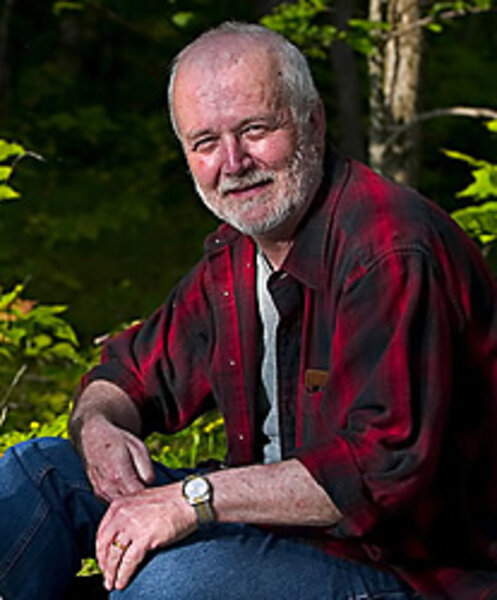A Depression-era tale of privilege and poverty
Loading...
There's more than fireworks lighting up the sky on July 4, 1936. At The Reserve, an exclusive rustic playground for wealthy New Yorkers in the Adirondacks, divorced socialite Vanessa Cole watches as a seaplane lands in front of her parents' cabin on Second Lake, mildly disappointed because she secretly hoped the pilot was going to crash. (No, he's not a former boyfriend – just a famous artist coming to examine her dad's collection of paintings.)
Vanessa and the artist, Jordan Graves, are the unappealing duo at the heart of The Reserve, the new novel by Russell Banks ("The Angel on the Roof"). While it's a close contest as to which is the more self-centered, Vanessa wins the award for most mentally imbalanced in a walk.
That quickly becomes clear after her father, a wealthy neurosurgeon, has a heart attack later that night, and Vanessa becomes terrified for her future. Vanessa, Banks hints, may have good reasons to be afraid, and "The Reserve" takes its time chronicling whether the betrayals are real or delusions brought on by Vanessa's flickering hold on her sanity.
The thing is, "The Reserve" is so distant toward its characters – and really, who can blame it? – that it's difficult to become overly concerned about the fates of its pampered players, even when it becomes apparent that not everyone is going to make it out alive.
Banks does get off one terrific "Gotcha" moment, which I don't want to ruin here, but the strengths of "The Reserve" lie less in its plot, and more in its examination of class structure in a closed community.
The residents are all either absurdly wealthy or the underpaid, underemployed locals who subsist as servants at the elaborate "camps" the millionaires built around Second Lake. One of these, Hubert St. Germain, is a woodsman who works for the Coles and finds himself, like Jordan, improbably drawn into Vanessa's schemes. "The guides were gruff, no-nonsense men whose skills and knowledge of the mountains, forests, lakes, and streams were essential to and much admired by people from the cities whose desire for a wilderness experience, starting in the mid-1800s, brought them north...."
But what began as a mutually beneficial exchange had become so lopsided that when the Great Depression hit and the local mills closed, all the locals had left was their land, which the rich outsiders and The Reserve quickly gobbled up for a few dollars an acre. "In two generations, a class of independent yeomen and yeowomen had been turned into a servant class, with all the accompanying dependencies, resentments, insecurity, and anger."
Insecurity and dependency are things with which Jordan seems entirely unfamiliar. Jordan, Banks has written, is based on the artist and wood-cut engraver Rockwell Kent. Kent enjoyed traveling to farflung, freezing places such as Alaska, Greenland, and the Andes. Also, like his contemporaries John Dos Passos and Ernest Hemingway, Kent combined a high-flying lifestyle with socialist politics – and Banks enjoys exploring the tensions and hypocrisies inherent in that stance.
Jordan's conscience is impressively pliable to begin with – despite being married with two small sons, he's a notorious philanderer, who justifies his actions by only sleeping with women with whom he "can't fall in love." These, we are led to understand, tend to be young women of other races (and yes, that grinding sound you hear is my teeth).
Airships appear to have captured the imagination of more than a few of today's novelists, leading a reader to wonder if they're fans of the animation of Hayao Miyazaki (and there are many, many worse ways to spend one's time). The bloated, ominous presence of the Hindenburg floats above "The Reserve," and one of the characters has a ticket to ride the ill-fated zeppelin.
Unfortunately, pages set on the Hindenburg, as well as chapters set during the Spanish Civil War, seem more like extraneous historical passages than an integral part of the novel. And while Banks has immersed himself in the time he's writing about and manages to evoke Hemingway without ever aping his style, "The Reserve" is occasionally dotted by the type of small errors that an editor should have caught. For example, Jordan finds himself "remembering" movies that hadn't been released by the summer of 1936 – "My Man Godfrey" and sequels to "The Thin Man."
Banks is one of the most respected novelists working today and has proved brilliant at both mingling history and fiction – most notably in "Cloudsplitter," which reworked the life of fiery abolitionist John Brown – and adept at handling grief and the most poisonous relationships between parents and children ("The Sweet Hereafter"). His abilities are never in question, but "The Reserve" suffers to too great a degree from its titular quality.
• Yvonne Zipp regularly reviews fiction for the Monitor.






